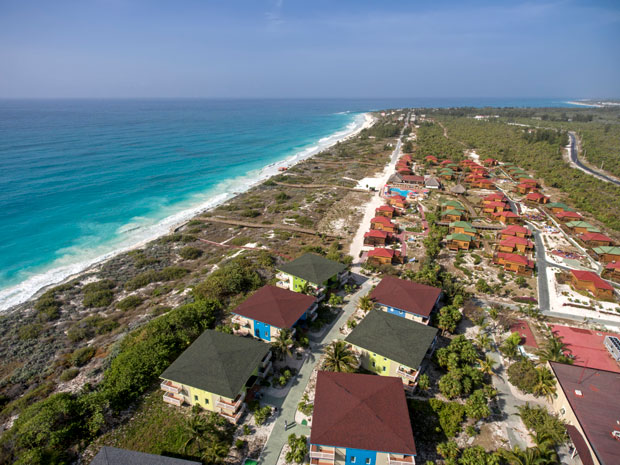by Frank Martin
The worst catastrophic angle of the heat wave hitting a part of the world today is that it is the result of terrible climate change.
The situation with excessive heat is that it strengthens human concerns about glacial collapse, apocalyptic floods, and stifling air, among other ills.
But it is also true that international tourism, and especially tourist regions like the Caribbean, have plenty of antidotes to excessive heat, at least so far.
For many people who like the Caribbean for their vacations, the best season to visit the islands is from December to May. The good Caribbean weather at that time is indisputably pleasant, with fresh breezes that are not interrupted by the cold of other latitudes or by cyclones.
It is true that from June to November hurricanes move through that part of the world after forming in areas near the African coast.
But the early detection and evacuation systems are becoming more perfect on the islands.
Climate change threatens virtually the entire planet, with different challenges depending on regional locations.
Scientists estimate that this transformation threatens the disappearance of beaches, makes storms more frequent and severe, causes long droughts and even decreases snowfall, depending on where they occur.
A few years ago, the World Tourism Organization (UNWTO) recognized the vulnerability of the tourism industry to climate change. It is true that it can cause forest fires, new infectious diseases, loss of biodiversity, jellyfish plagues caused by warming oceans and other negative phenomena.
This helps some experts say that warming and its aftermath, including intense heat, may make the coldest regions the most popular for tourism for decades to come.
Despite the criteria, persistent vacationers continue to travel to tropical countries in the summer.
In Europe, pessimists take Mallorca as an example, among the most popular islands for its extensive beaches that would be at serious risk of disappearing.
But Mallorca can already host a record number of guests this summer during which heat wave complaints rain down mainly on non-tropical countries, including the United States.
And how does the Caribbean face the heat wave of 2022?
The answer is, as in all the other summers before: “Ok”.
The Institute of Hydrology, Meteorology and Environmental Studies (IDEAM), a Colombian entity, predicted that there will be during this summer maximum temperatures of 37 degrees Celsius in the region while the little cloud cover allows it.
However, no alarms or special emergencies are yet reported.
An Internet publication explained that vacations in the Caribbean are presented in people’s minds “as the typical bucolic image of long palm trees, golden sand and crystal clear waters to enjoy with temperatures around 28 degrees and under an intense blue sky.” . . .
Drizzle or sporadic drizzle can be added, which tends to soften the effects of heat. The sea, the rivers, the shade of the trees and the Caribbean breeze are allies against to strong summers. “Not even in August can the heat make a dent in the beauty of the beaches,” a Spanish tourist visiting Cuba told TTC.
Nobody denies that December to May are perfect months to enjoy that part of the world.
Nevertheless summer is not negligible and tourism promoters know it.
In Cuba, for example, a well-known hotel chain currently advertises clear skies and walks in the morning sun for the summer. And the sea breeze.
From the Caribbean come showers of offers to visit the beaches of the Dominican Republic, Mexico, Jamaica and many other destinations.
And if the heat is too severe, the diner may prefer cocktails in which the ice, along with other paradisiacal ingredients, can dissipate the heat in a moment.
FM

MORE NEWS











